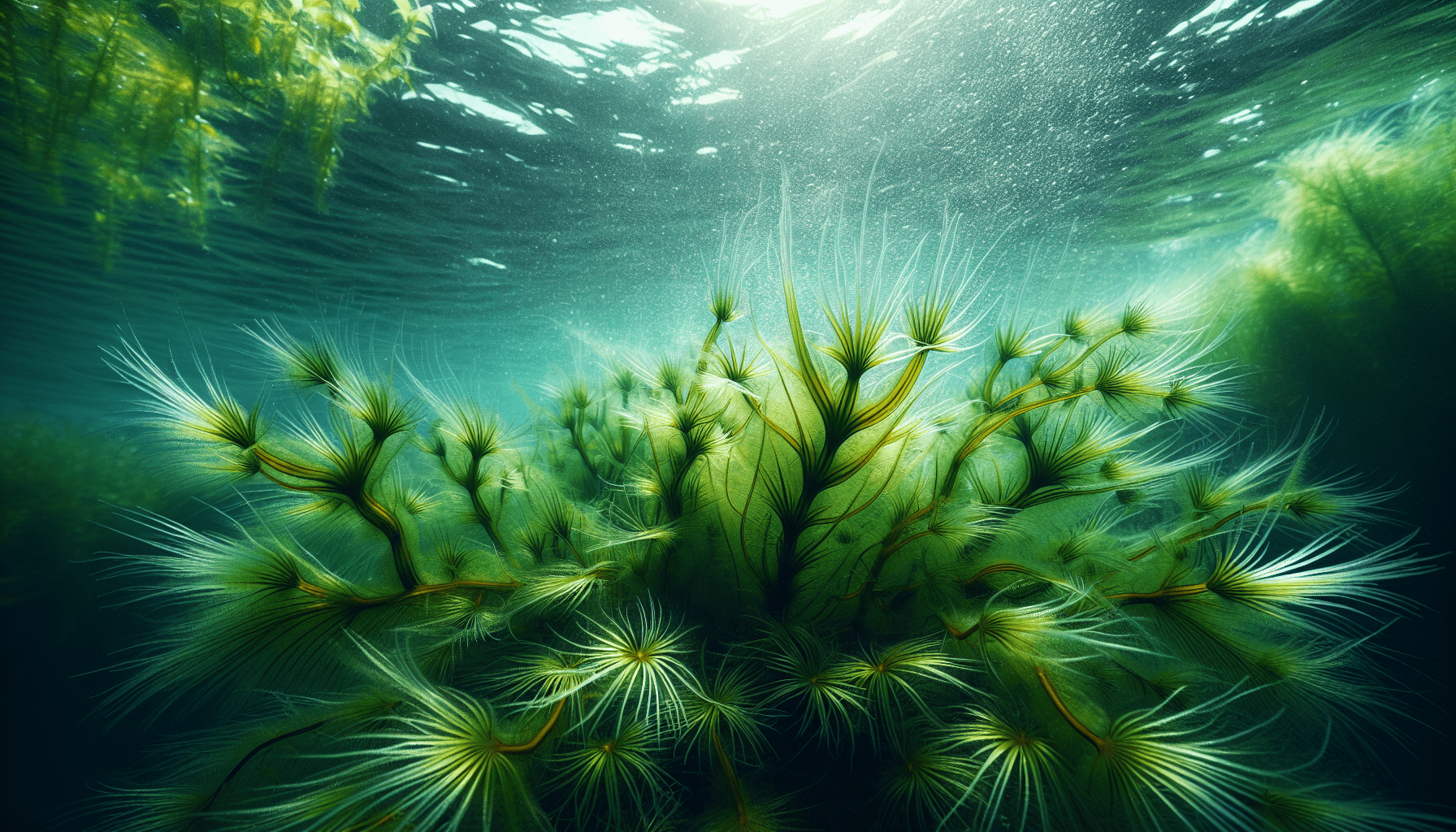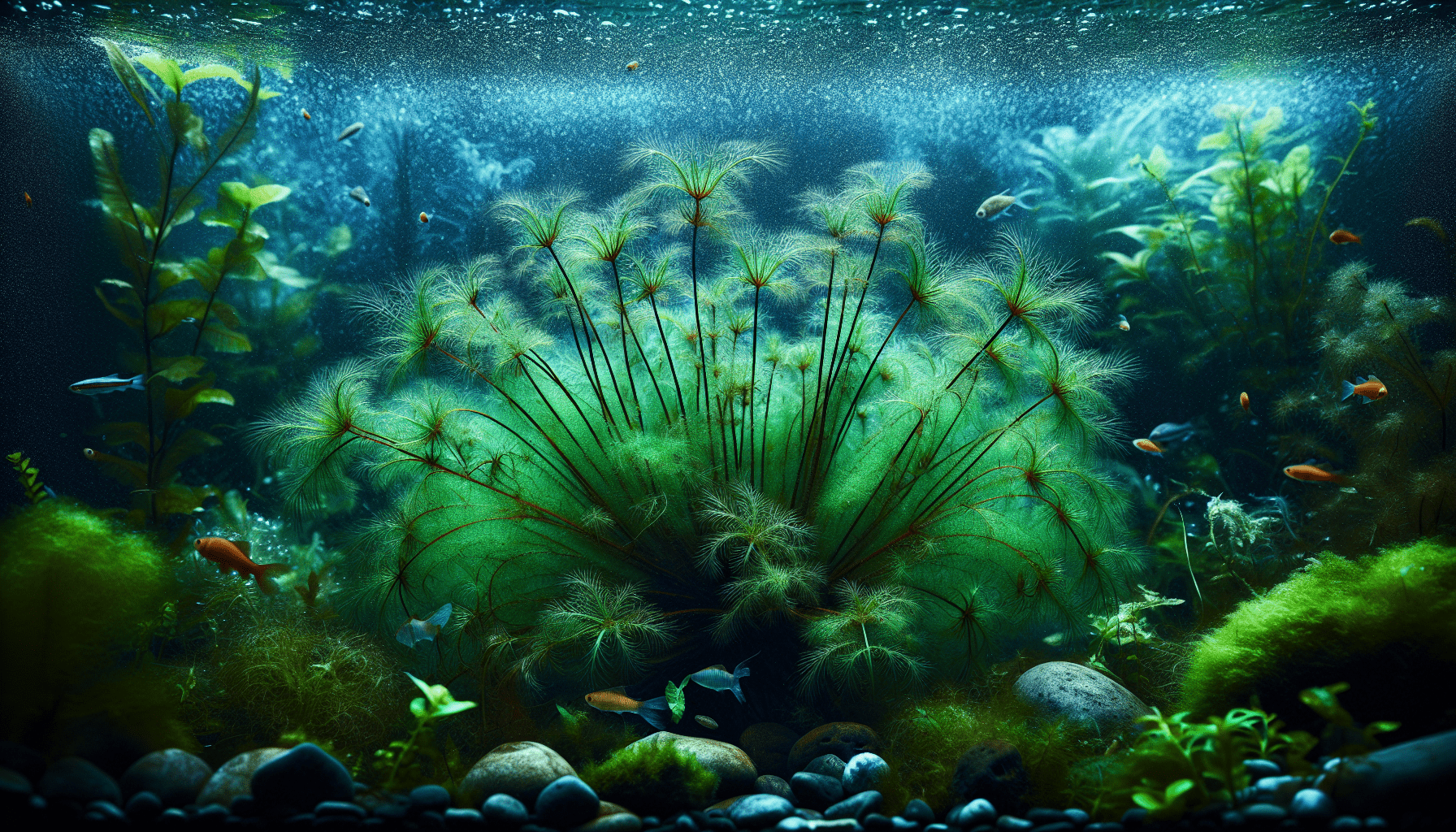In your exploration of aquatic botany, you might come across a particular species of water plant known as Fontinalis Antipyretica. Its intriguing name catches the eye, but what truly sets it apart is its fascinating array of adaptations that allow it to thrive in watery habitats. In this article, you’ll be guided through the intricate details of this aquatic weed, from its scientific classification to its distinctive features, interesting uses, and its role in the broader ecosystem. This encapsulating discussion on Fontinalis Antipyretica will surely deepen your understanding of the intricate and rich world of aquatic plant life.

Understanding Fontinalis Antipyretica
Definition of Fontinalis Antipyretica
Fontinalis Antipyretica, an intriguing botanical species, is commonly known as an aquatic moss that thrives in freshwater ecosystems. Belonging to the Fontinalaceae family, this moss is often found submerged or semi-submerged in stagnant and steadily flowing aquatic environments. The term “antipyretica,” derived from its historical use in treating fevers, indicates a glimpse of its potential medicinal properties.
Common Names
The common names of Fontinalis Antipyretica range widely based on regional preferences and appearances. It is often referred to as willow moss because of its long and trailing stems that resemble a willow tree’s descending branches. Some also call it the Great Water-Moss or Fountain Moss due to its robust nature and fascinating growth patterns.
Origin and Habitat
Fontinalis Antipyretica is an indigenous species widely distributed across the Northern Hemisphere. It finds its origins and extensive distribution in Europe, North America, and Asia and has successfully adapted to colder, temperate climates. The habitat of this aquatic moss includes both lentic and lotic environments, such as rivers, streams, ponds, and mountain brooks.
Characteristics of Fontinalis Antipyretica
Physical Features
The leading physical feature of Fontinalis Antipyretica that attracts attention is its leafy, green branches and clusters that present an elegant spectacle when suspended underwater. The leaves are ovate-lanceolate and possess a crisp, serrated margin. These leaves are arranged densely on each branch, giving it a fluffy appearance.
Growth Patterns
Growth in Fontinalis Antipyretica is perennial and of the pleurocarpous type, meaning that their lateral shoots develop into branches rather than sporophytes. This moss tends to form thick carpets or tufts on the substrates it occupies, often reaching lengths of up to 20 cm or more.
Coloring and Appearance
The overall appearance of Fontinalis Antipyretica is predominantly a lush and vibrant green, although the color may vary from yellow-green to dark green, based on environmental factors and lighting conditions. Mature moss displays a darker green hue compared to the newly grown stems.
Growth Requirements
The growth requirements of Fontinalis Antipyretica are adaptable but thrive best in cool to moderately warm waters. It is tolerant to varying acidity levels, though a mildly acidic pH is preferable. This moss also requires high light intensity and nutrient-rich substrates for optimal growth.
Life cycle of Fontinalis Antipyretica
Phases of Life
The life cycle of Fontinalis Antipyretica follows a standard moss lifecycle, alternating between two distinct phases – the gametophyte and sporophyte phases. The gametophyte stage is the dominant and visible part of the life cycle, while the sporophyte is a transitory phase that ends in spore release.
Reproduction Methods
The mode of reproduction in Fontinalis Antipyretica is primarily sexual, involving the production of both male and female gametes. The moss, however, also possesses vegetative reproduction capacities, where new plants develop from fragments of existing ones.
Longevity
Given the right conditions of cool and clean waters, high light, and nutrient provision, Fontinalis Antipyretica exhibits impressive longevity, with colonies persisting for years and growing extensively.

Ecological Importance of Fontinalis Antipyretica
Role in Aquatic Ecosystems
Fontinalis Antipyretica has prominent roles in aquatic ecosystems. It offers excellent habitats for a variety of invertebrates, serving as protection and a source of food. The moss also contributes to moderating the aquatic environment by producing oxygen and absorbing excess nutrients.
Benefit to Surrounding Flora and Fauna
The moss not only supports microbial communities but also provides ideal substrates for the settlement and growth of other plant species. Fish and amphibians often use the dense mats formed by this moss as breeding and nursery grounds.
Impact on Water Quality
Through their biofiltration capacities, Fontinalis Antipyretica helps in improving water quality. These plants absorb and break down toxic substances, thereby reducing levels of contamination.
Human Use of Fontinalis Antipyretica
In Aquaculture
In aquaculture, Fontinalis Antipyretica is used because of its fast growth and oxygen production capabilities. It also serves as food for a variety of fish and crustaceans.
In Aquascaping
Fontinalis Antipyretica is a favorite among aquascapers for its decorative appeal and easy maintenance. It is commonly used for carpeting the tank floor and creating a backdrop with its lush mats.
Medicinal Use
Historically, Fontinalis Antipyretica was used for its antipyretic properties, i.e., to reduce fever. Though not commonly used today, ongoing research may unlock other therapeutic potentials of this moss.
Use in Traditional Practices
In traditional practices, Fontinalis Antipyretica has been used for its mystical and healing properties. It has also been used as a packing material and as a natural coolant during transportation.
Maintenance of Fontinalis Antipyretica in Aquariums
Water Parameters
To maintain Fontinalis Antipyretica in aquariums, water temperature should ideally be kept between 10-24°C, with a pH range of 5.0 to 7.5. Regular filtration is crucial to ensure clean water and to prevent the accumulation of harmful substances.
Light Requirements
While Fontinalis Antipyretica can tolerate a range of light conditions, bright light ensures the best growth and health. Moderate light could lead to a lighter green color, while low-light conditions can result in a darker hue.
Pruning and Care
The dense growth of Fontinalis Antipyretica needs regular pruning to prevent overcrowding and to allow light and nutrients to reach all parts of the moss. Dead or yellowing parts should be removed promptly to prevent rot.
Propagation Methods
Propagation of Fontinalis Antipyretica can be achieved by simply separating a portion of the plant and reattaching it to a new substrate. This moss is tolerant of fragmentation, hence pieces will soon form new colonies.
Potential Problems with Fontinalis Antipyretica
Common Diseases
Fontinalis Antipyretica is relatively resistant to most diseases. However, like other mosses, it could be susceptible to fungal infections due to excess moisture.
Controlling Overgrowth
The rapid growth of Fontinalis Antipyretica can lead to issues with overgrowth, resulting in depleted nutrients and light, affecting the health of the overall aquarium ecosystem.
Problems with Infestation
Infestations of pests such as snails and certain types of algae can pose problems to this moss. Regular checks and prompt action can help in controlling these issues.
Beneficial Symbiotic Relationships and Interactions
Fish and Fontinalis Antipyretica
Fish often seek refuge and forage amidst the lush growth of Fontinalis Antipyretica. The moss, in turn, benefits from the nitrogenous wastes produced by the fish, which act as nutrient sources.
Amphibians and Fontinalis Antipyretica
Similarly, amphibians find excellent hideouts and breeding grounds within stands of Fontinalis Antipyretica. The moss also enhances water quality, indirectly benefiting the amphibians.
Other Aquatic Plants and Fontinalis Antipyretica
Fontinalis Antipyretica, with its demand for high nutrients, can reduce competing nutrient levels, thus helping to control the overgrowth of other more invasive plant species.
Conservation Status and Threats
Current Conservation Status
While not currently listed as threatened or endangered, certain regional populations of Fontinalis Antipyretica may face local extinctions due to habitat disturbances.
Environmental Threats
Environmental threats to Fontinalis Antipyretica primarily involve water pollution, which can lead to oxygen deprivation, and warming waters, which this moss species may find challenging to adapt to.
Human-Induced Threats
Human-induced threats to Fontinalis Antipyretica might involve over-harvesting for commercial use or destruction of its natural habitats due to urban development.
Studying and Observing Fontinalis Antipyretica
Methods for Observing and Studying
Observing and studying Fontinalis Antipyretica can involve field sampling, lab-based observations, and population studies. More sophisticated techniques might include genetic analyses to determine evolutionary patterns and prospects.
Role in Scientific Research
Fontinalis Antipyretica serves as a model species in scientific research for studies related to aquatic moss physiology, tolerance mechanisms, and potential biotechnological uses.
Key Studies and Findings
Key studies on Fontinalis Antipyretica have identified its abilities for bioaccumulation of heavy metals, thereby potentially useful in bioremediation. Other findings have elucidated unique physiological mechanisms this species possesses to thrive in fluctuating aquatic conditions.